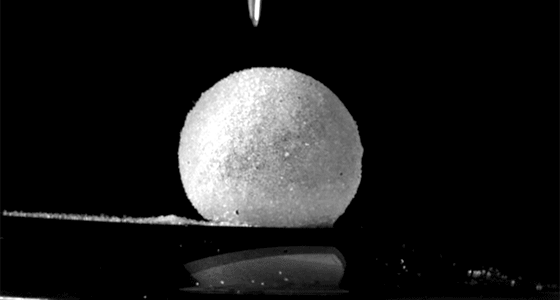
The shell of a water/glycerol gas marble (bubble) remains liquid and spherical even after 101 days, and it reacts as a liquid film when punctured. These human-made bubbles could be used to create stable foams. (credit: A. Roux et al., 2022)
Blowing soap bubbles never fails to delight one's inner child, perhaps because they are intrinsically ephemeral, bursting after just a few minutes. Now, French physicists have succeeded in creating "everlasting bubbles" out of plastic particles, glycerol, and water, according to a new paper published in the journal Physical Review Fluids. The longest bubble they built survived for a whopping 465 days.
Bubbles have long fascinated physicists. For instance, French physicists in 2016 worked out a theoretical model for the exact mechanism for how soap bubbles form when jets of air hit a soapy film. The researchers found that bubbles only formed above a certain speed, which in turn depends on the width of the jet of air.
In 2018, we reported on how mathematicians at New York University's Applied Math Lab had fine-tuned the method for blowing the perfect bubble based on a series of experiments with thin, soapy films. The mathematicians concluded that it's best to use a circular wand with a 1.5-inch (3.8 cm) perimeter and gently blow at a consistent 2.7 inches per second (6.9 cm/s). Blow at higher speeds and the bubble will burst. If you use a smaller or larger wand, the same thing will happen.
Read 9 remaining paragraphs | Comments
